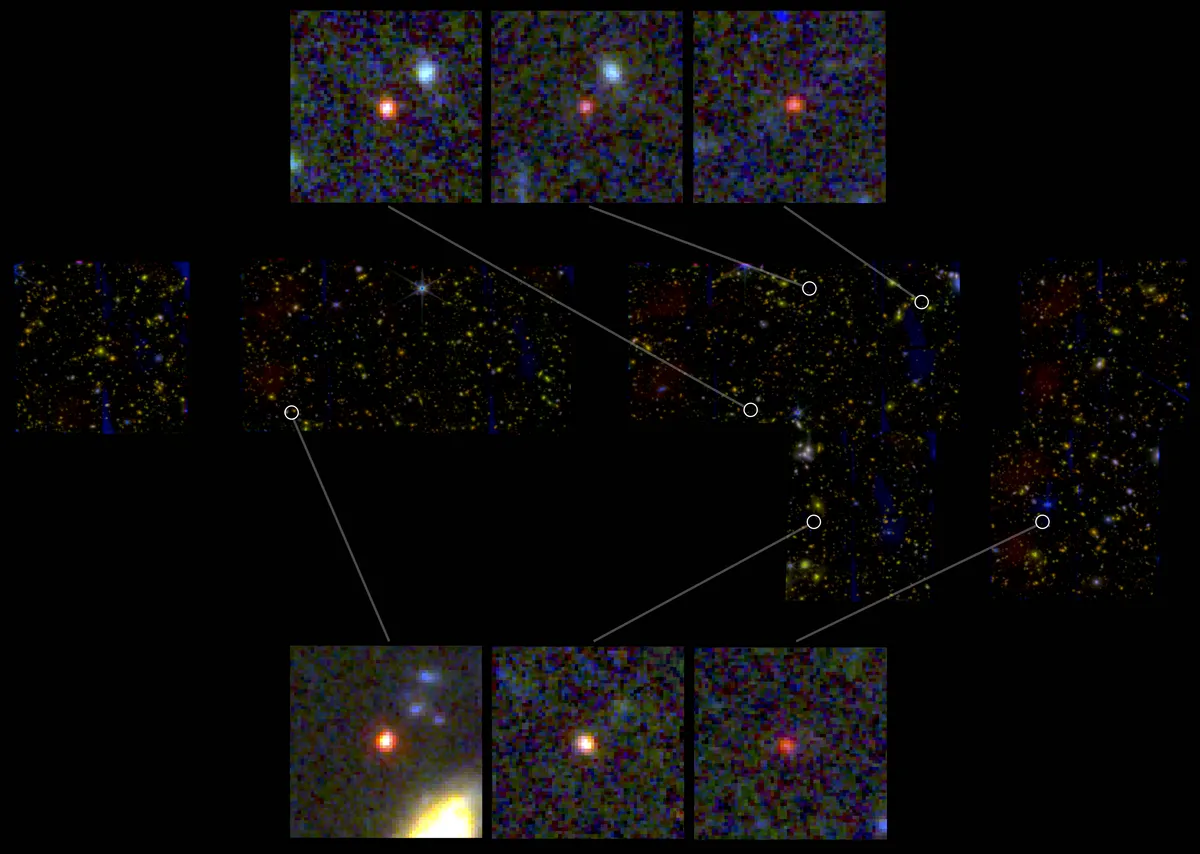An international team of astrophysicists has found six candidate galaxies hiding in data from the James Webb Space Telescope (JWST) that are so old and massive they can’t be explained by current cosmological models.
The galaxies are thought to date back to around 500 million years after the Big Bang, more than 13 billion years ago. According to current cosmological models, galaxies at this point in time should be in their infancy and be made up of only a few stars.
However, all six of the newly discovered candidate galaxies are gigantic and contain a similar number of stars to the modern-day Milky Way, which is much older.
“It’s bananas,” said co-researcher Erica Nelson, assistant professor of astrophysics at the University of Colorado Boulder. “You just don’t expect the early Universe to be able to organise itself that quickly. These galaxies should not have had time to form.”
The team discovered the candidate galaxies amongst images released by JWST's recent Cosmic Evolution Early Release Science (CEERS) survey – one of the telescope’s initial runs that saw it peering deep into a patch of sky near to the famous Big Dipper constellation.

Nelson was poring over the images when a few unusual fuzzy dots caught her eye. The dots were red, an indication that they were from old sources of light. This is due to the expansion of the Universe stretching out the light emitted from celestial objects, increasing its wavelengths and making it appear more red.
After running a number of calculations, the team were able to date the candidate galaxies back to just over 13 billion years ago and determine that they contained tens to hundreds of billions of Sun-sized stars worth of mass. This means that they would’ve had to have formed stars at an astonishing rate due to their short lives.
“The Milky Way forms about one to two new stars every year,” said Nelson. “Some of these galaxies would have to be forming hundreds of new stars a year for the entire history of the Universe.”
The team now intend to further study the mysterious cosmic objects using JWST in order to confirm or disprove that they do date so far back in time and contain as many stars as their preliminary observations suggest. However, these initial results offer a tantalising taste of how JWST could already be rewriting astronomy textbooks, they say.
“If even one of these galaxies is real, it will push against the limits of our understanding of cosmology,” said Nelson.
Read more about the James Webb Space Telescope:
- James Webb is about to take us to the 'edge of time'. Here's why that's even cooler than it sounds
- See all of the James Webb Space Telescope's stunning images
- NASA’s James Webb telescope spots ‘sparkling’ galaxy that may contain the oldest stars ever seen
- Why do all the stars have 8 points in the James Webb images? An astronomer explains